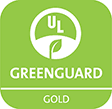The Dirty Details
Ceiling tiles can reflect light to increase the efficiency of lighting systems and reduce energy costs. They can also effectively block or reduce noise. Ceiling tiles are typically made with mineral wool, fiberglass, gypsum, perlite, clay, cellulose or starch. Metal, glass and wood are also gaining popularity as specialty materials. When selecting ceiling tiles, it’s important to consider the material used and the potential for negative health effects.
The glues used to bind composite materials in ceiling tiles may contain formaldehyde, a carcinogen and respiratory irritant. Many fiberglass and mineral fiber ceiling panels, for instance, use phenol-formaldehyde as a binding agent. Recycled materials used in ceiling tiles may also contain formaldehyde.
Microbes
If you are considering acoustic ceiling tiles, note that the porous materials often used in them can harbor mold, fungi and bacteria. These microbes have been associated with respiratory symptoms including asthma, bronchitis and sinus problems, as well as respiratory infections. A high-quality ventilation system and humidity control can prevent the growth of mold. The U.S. Centers for Disease Control and Prevention recommends using these methods instead of the antimicrobial treatments manufacturers often add to ceiling tiles.
Antimicrobial Coatings
The CDC says there is no available evidence that the use of this type of antimicrobial treatment will prevent disease. Some commonly used antimicrobials, including silver-based compounds and triclosan, may be harmful to human health and the environment. The risks of using these products may outweigh the benefits. Selecting tiles made with naturally moisture-resistant materials like clay, metal or perlite is another way to prevent mold.
PVC
Polyvinyl chloride is often used in moisture-resistant ceiling tiles. But PVC manufacturing releases many toxic chemicals, including harmful dioxin compounds. Vinyl chloride, used in PVC production, also poses a serious risk to workers. Phthalates, which have been strongly linked to hormone damage, are often added to PVC, and may be emitted into the air in your home. Some studies suggest that phthalates in indoor air may increase the risk of asthma.
Flame Retardants
Although many materials in ceiling tiles are inherently fire resistant, some manufacturers add toxic chemical flame retardants. But it’s hard to figure out if your tiles have flame retardants, as manufacturers don’t have to disclose their use on labels or websites. Call the company directly and ask.
Asbestos
Ceiling tiles installed before 1981 most likely contain asbestos. Inhalation of asbestos fibers can cause deadly lung diseases such as cancer, mesothelioma and asbestosis. If you know or suspect that your ceiling tiles may contain asbestos, see the tips in EWG’s Consumer’s Guide to Asbestos. If asbestos tiles are in good shape and not disturbed, the risk of exposure is low. But if they’re damaged or you’re doing any work on the ceiling, consult a licensed contractor.
